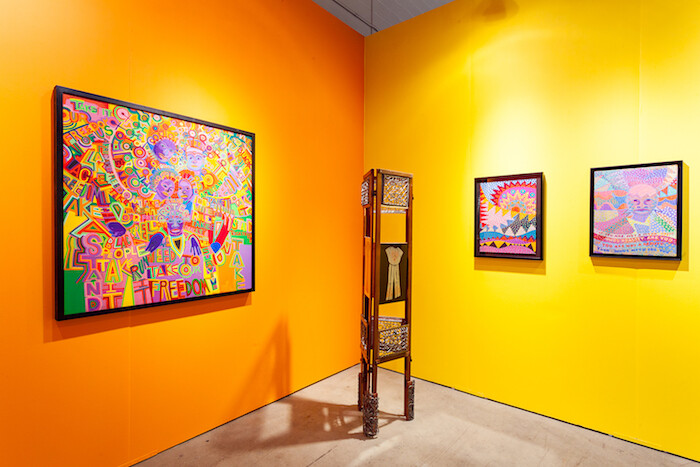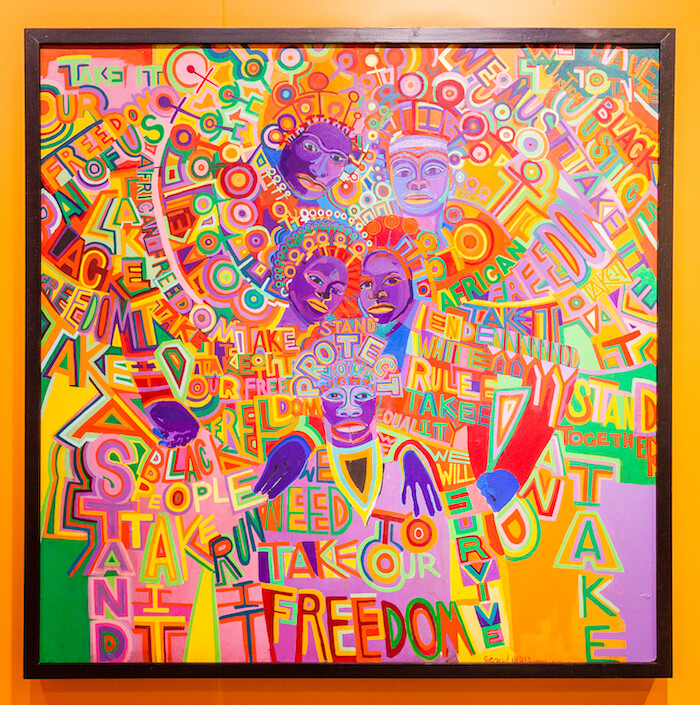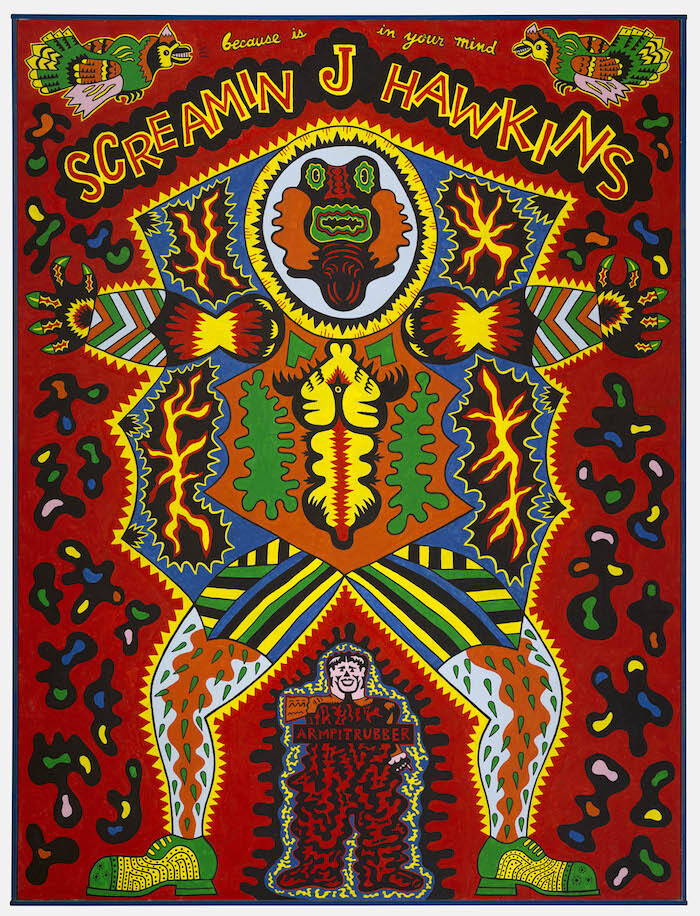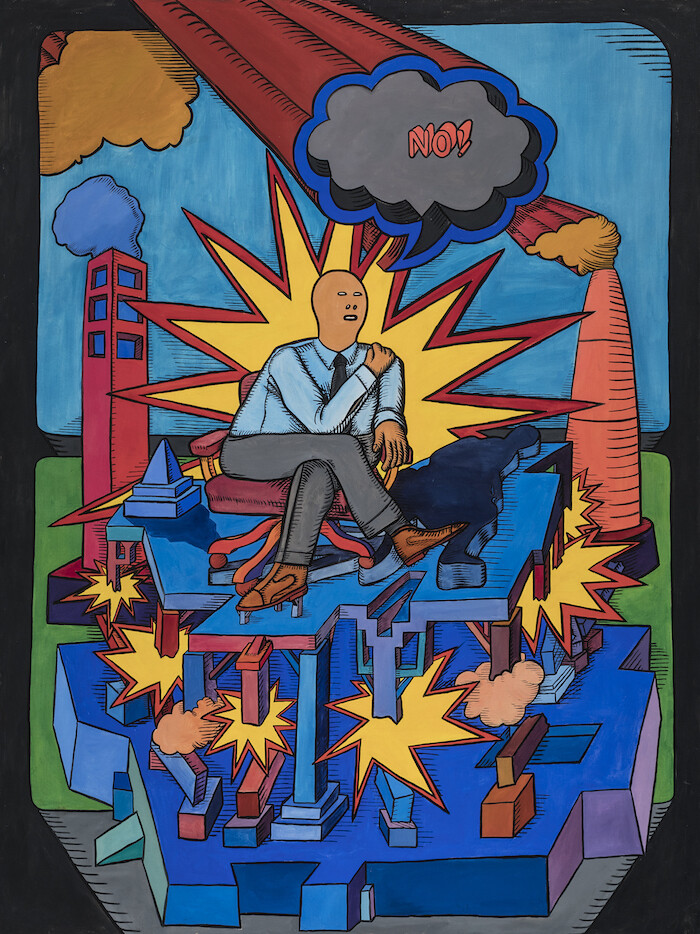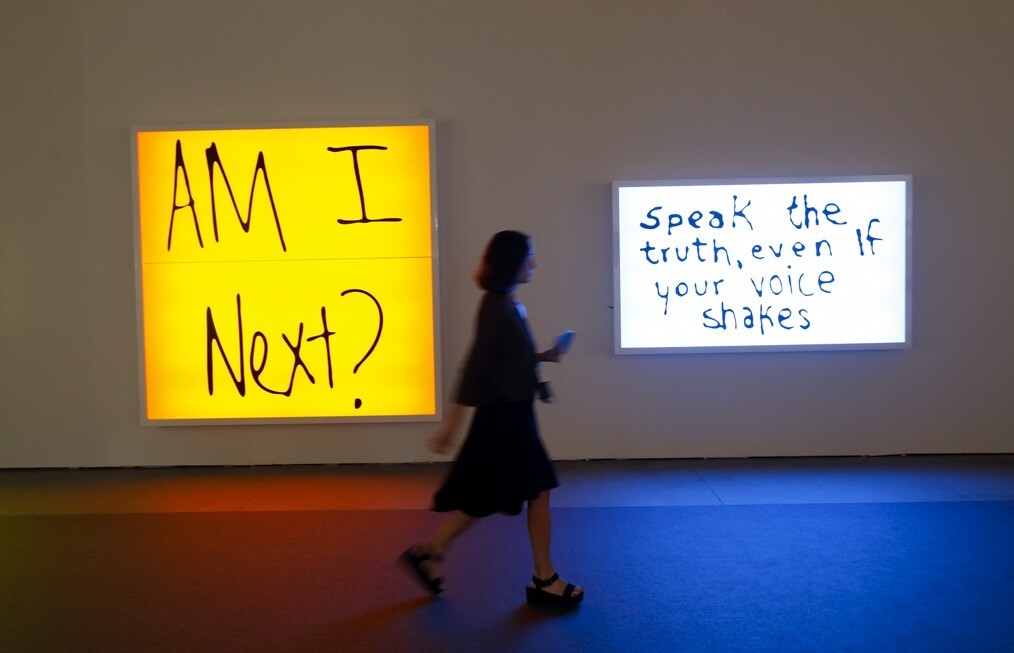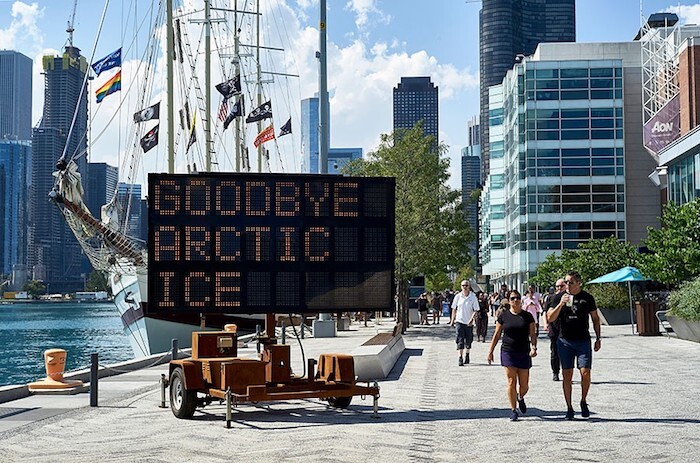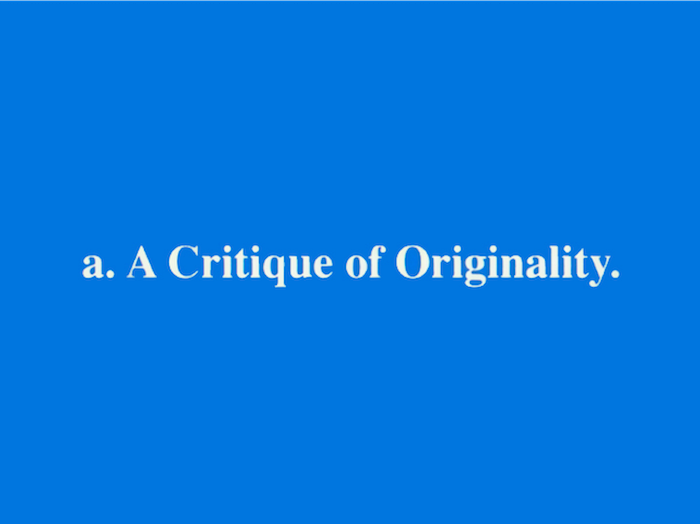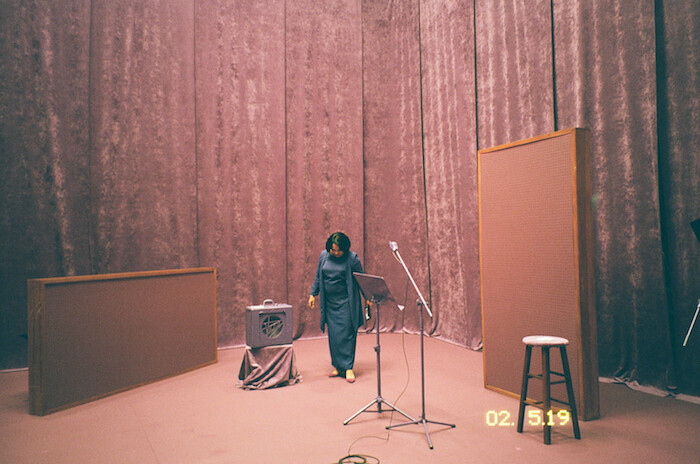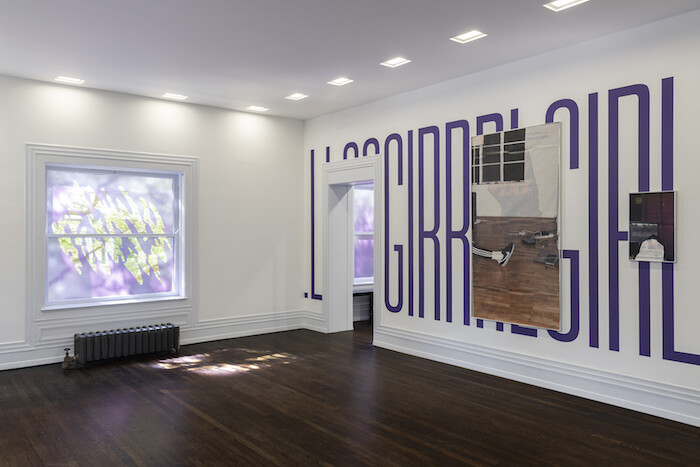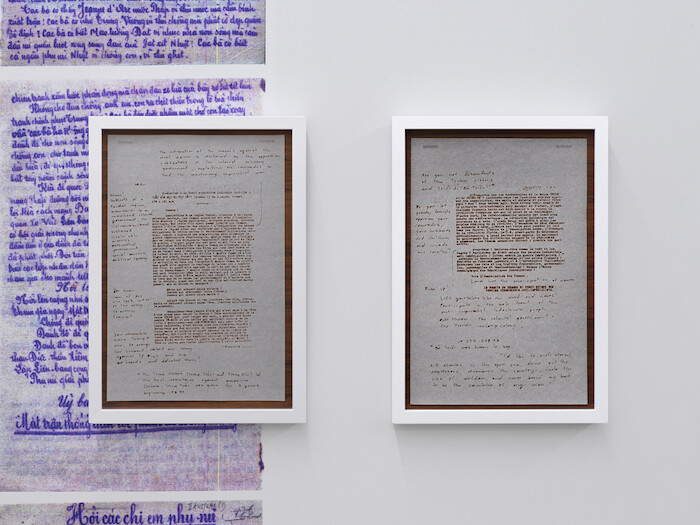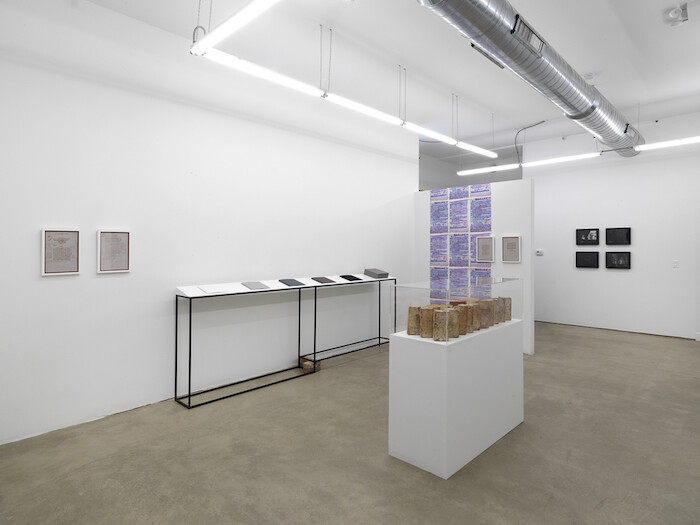The Tribune Tower in Chicago’s Downtown, home to the Chicago Tribune until a few months ago—it is being converted to luxury apartments—includes a collection of stones from famous buildings around the world embedded into its exterior. The newspaper’s journalists on assignment brought these stones back from Notre Dame and the Taj Mahal, the Parthenon and Hagia Sophia, and they were laid into the building with an engraving noting their origin. It epitomized the spirit of the place: a historically international city whose architectural monuments, from Louis Sullivan’s skyscrapers to Ludwig Mies van der Rohe’s modernism, are studied around the world, but also a city which attempts to bridge regionalism and internationalism, allowing this dichotomy to become a defining sense of its culture.
At the Art Institute of Chicago, one of the world’s most illustrious encyclopedic museums, both temporary exhibitions relate to Chicago’s history: there is “John Singer Sargent and Chicago’s Gilded Age,” focusing on his Chicago patrons (the painter never lived in the Windy City, these are simply the Chicago elite who traveled to Paris or London, and one patron who took Sargent on a watercoloring trip to the Florida Keys). Alongside it is an exhibition charting the short history of Hairy Who, a group of proto–Chicago Imagists who banded together to exhibit their works. With “Hairy Who? 1966–1969,” the Art Institute show traces the group’s activity via their exhibitions between 1966–69. It’s a local narrative that joins the current trend of reenacting historical exhibitions. Another Chicago-based group is shown at Kavi Gupta; “AFRICOBRA 50” (which stands for African Commune of Bad Relevant Artists), curated by the co-founding member Gerald Williams, includes paintings, sculptures, and clothes by 12 artists largely from the late 1960s and ’70s but also including Jae Jarrell’s Jazz Scramble Jacket (2015), silkscreening a jazz-term crossword to a jacket. Both exhibitions, at the museum and one of the city’s most internationally recognized galleries, create complete environments in which the works are displayed with walls painted in vibrant colors. It feels fitting, yet also insular: as these histories are charted, there is little attempt to tie these local groups to a larger context or even to each other, though they are contemporary and their colorful, comiclike aesthetic do seem like they could illuminate each other. (And maybe add some much-needed political content to Hairy Who, as AFRICOBRA work dealt directly with Civil Rights subjects, for example in Barbara Jones-Hogu’s Unite [1971], a screenprint on paper from an image of a group of men raising clenched fists.)
At the Graham Foundation’s turn-of-the-century Prairie-style mansion, Martine Syms’s exhibition, “Incense Sweaters & Ice,” is named for its central work: the artist’s first feature-length video (2017), which premiered at MoMA that year. At the Graham, Syms has the space and the context to create a significant architectural intervention—the walls are painted purple, stickers in amorphous shapes of the same color are glued to the windows, and purple semi-circular benches are set in front of the three screens—creating an enveloping space through which the viewer crisscrosses as the video shifts from one screen to another. The movement corresponds to the movement of the video’s heroine, Girl, a traveling nurse. The viewer follows Girl as she checks into and out of motels and hotels, drives rental cars, cares for people in their homes, and texts—the speech bubbles flanking the sides of the screen—with WB (White Boy) who she is flirting with. Up the grand wooden staircase, Syms shows a wall painting of stenciled purple letters, filling the wall with one word—GIRRRLGIRLLLGGGIRLGIIIRL (2017)—and a series of archival pigment prints on found posters accompanied by an augmented reality app—wyd rn? (2017)—where the viewer could direct his or her phone at the works and watch videos and gifs that echo Incense Sweaters & Ice. Syms’s attention to the architecture is in keeping with the Graham Foundation’s mission to support creative work on architecture and urbanism, and it creates a space of intimacy, in keeping with the work’s sensitive portrayal of its subject.
Syms’s use of text—both in the text messages and the wall painting—brought to mind the proliferation of text-heavy works at the concurrent art fair, Expo Chicago. Approaching its ground in the Navy Pier, a public work, We Are the Asteroid I (2018) by Justin Brice Guariglia welcomed visitors. An LED traffic message board, the kind announcing road works, was set on the promenade, displaying messages like “Don’t echo shop, echo vote” and “Goodbye arctic ice.” Inside the fair, one of the special projects in the In/Situ program were three large lightboxes by Sam Durant, reading “Stay,” “Am I next?,” and “Speak the truth, even if your voice shakes.” Durant, whose work Scaffold (2012) at the Walker Art Center drew a lot of criticism from the local population for its reference to the hanging in Minnesota of 38 Dakota tribe members in the nineteenth century by American settlers and was dismantled (then buried by local Dakota), presents a work that—like Guariglia’s sculpture—left a strong sense that a message or lesson needs to be compelled rather than suggested or explored. More nuanced treatment of language is in the video program titled “Portrait of a Tongue—Towards Non-Visibility,” organized at the fair by curator Anna Gritz from Berlin’s KW. It included Tony Cokes’s 6^ (2001), just short of four minutes long, with a white text wrapping against a blue background and a soundtrack from punkrock band Appendix. It interposes sentimental messages—“How sad are we?,” “And how sad have we been?”—with a critique of language and its use: “Is it possible to make legible pop without stupid emotional triggers?,” the text reads. Earlier, there was a statement: “And the songs we sing: they’re not supposed to mean a thing.”
Cokes, like Syms, shows language as inextricable from use and baggage. They are joined in this by local artist Hương Ngô, who in her exhibition “Reap the Whirlwind” at Aspect/Ratio explores the visual and linguistic representation of the female body in colonized Vietnam. It includes Livre de Poche [Paperback] (2018), a vitrine complete with romance novels about the relationship between Vietnamese women and French men, and a series of artist’s books where excerpts from the novels explaining the position of the Vietnamese concubine were reprinted using thermal ink. To learn about these women’s conditions, the viewer must place a hand on the book, body heat exposing the text. Ngô was born in Hong Kong, is based in Chicago, and often works between France and Vietnam. The idea of the local is never simple in a world marked by migration. Of the works currently on view in Chicago, I will hold on to the ones that attempt more than just a local history—Syms, Ngô, or the AFRICOBRA artists, who all display a nuanced image of the self in front of the world; and an image of the world that is more complex than stones embedded in the façade of a building, pointing to an elsewhere that is never there.
There’s an art historical term for the repurposing of stones in the Tribune Tower: spolia. The most famous example thereof is the triumphal Arch of Constantine in Rome (315 AD), which uses sculptures from older imperial monuments, creating a sense of the sustained nature of the Roman Empire even while generating an inconsistent visual language. The spolia rooted in the Tribune Tower represent an idea of the world whose optimism and universality feel expired, like the newspaper’s relation to its namesake building. Another argument about how language can be suggestive and rich: that feeling when you stand in front of a building and see how ideas can become void. The Tribune Tower is a monument to the ideal of journalism. The quotes carved into the building’s great hall include one from Abraham Lincoln (a piece of whose tomb is also fixed into the Tower’s exterior): “Let the people know the facts and the country will be safe.”

